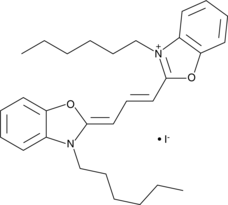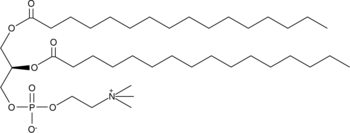Description
A fluorescent dye; ex/em spectra = 484/501 nm, respectively; accumulates in ER at high concentrations and has been used to visualize ER in moss, yeast, and muscle cells; accumulates in mitochondria at low concntrations and has been used to assess mitochondrial dislocations, fusion, and fission in living cells, as well as to visualize cellular apoptosis; used to assess cell membrane potential, as depolarization directly correlates with increased fluorescence; photoexcitation inactivates intracellular organelle movement and inhibits microtubule polymerization in vitro,
Formal name: 3-hexyl-2-[3-(3-hexyl-2(3H)-benzoxazolylidene)-1-propen-1-yl]-benzoxazolium, iodide
Synonyms: DiOC6(3)|NK 2280
Molecular weight: 572.5
CAS: 53213-82-4
Purity: ≥98%
Formulation: A crystalline solid
Application|Fluorescence||Product Type|Biochemicals|Labeling & Detection|Fluorescent Probes||Product Type|Biochemicals|Microtubule Dynamics||Research Area|Cell Biology|Cell Death|Apoptosis||Research Area|Cell Biology|Cytoskeleton & Motor Proteins||Research Area|Cell Biology|Endomembrane System & Vesicular Trafficking||Research Area|Cell Biology|Mitochondrial Biology



